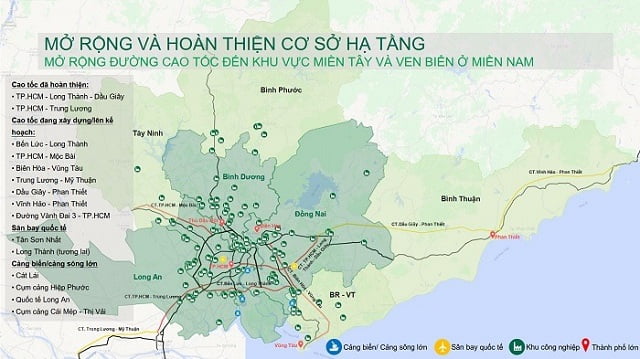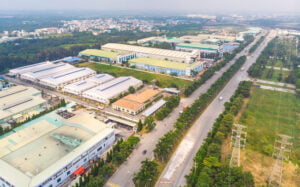Industrial real estate investors will expand production into emerging areas, invest in the logistics sector, and purchase existing projects. The growth of industrial real estate was driven by increased investment in infrastructure, both by land, by sea and by air.
At the Industrial Real Estate Forum this morning (October 28), Mr. Le Trong Hieu, Director of Office Business Consulting and Industrial Real Estate, CBRE Vietnam, pointed out 3 main trend of industrial property investors from 2020 onwards.
The first trend is to expand production of existing tenants through searching for expanded land supplies in emerging areas.
The second trend is that foreign investors and developers in the new logistics sector will enter the Vietnamese market. Demand is largely driven by e-commerce.
The third trend is that investors and developers will actively purchase existing industrial real estate projects.With this trend, Mr. Hieu believes that the most sought-after projects are Industrial zones are in planning and ineffective real estate projects.
Infrastructure is a boost to industrial real estate
According to Mr. Le Trong Hieu, the development of industrial real estate over the past time and in the future is motivated by the increase in investment in infrastructure by the Government and local authorities.

He cited the evidence that there are currently 3 newly started highways: Mai Son – Highway 45, Vinh Hao – Phan Thiet, Phan Thiet – Dau Giay. In addition, routes such as Hanoi – Hai Phong, Hai Phong – Ha Long – Van Don, Bien Hoa – Vung Tau, Ben Luc – Long Thanh, Trung Luong – My Thuan … also open. The seaport system is also focused on expanding investment such as Lach Huyen, Long An international port, Bac Van Phong.
In terms of airway, the about-to-start construction of Long Thanh international airport, continuous upgrading of the runway of Tan Son Nhat airport and Noi Bai airport are also the infrastructure factors that promote great demand.
In addition, when locating factories in China, businesses have to deal with pressures such as rising labor costs, tight legislation as well as unpredictable events. Meanwhile, a number of Southeast Asian countries, including Vietnam, have become bright spots because of their adjacent location and significantly improved investment and improved infrastructure. In addition, there are also free trade agreements, investment incentives …
Therefore, the representative of CBRE Vietnam acknowledged that this was an opportunity, a time of transformation for Vietnam’s industrial real estate.
“Currently, the land supply for logistics development is limited in prime locations with high rents. While e-commerce companies’ need to expand their storage space is soaring, maximizing the efficiency of land use is essential. Accordingly, developing warehouses and high-rise workshops in urban areas will be an inevitable trend ”, Mr. Hieu analyzed.
According to Lam Tung
Nguoi dong hanh
















